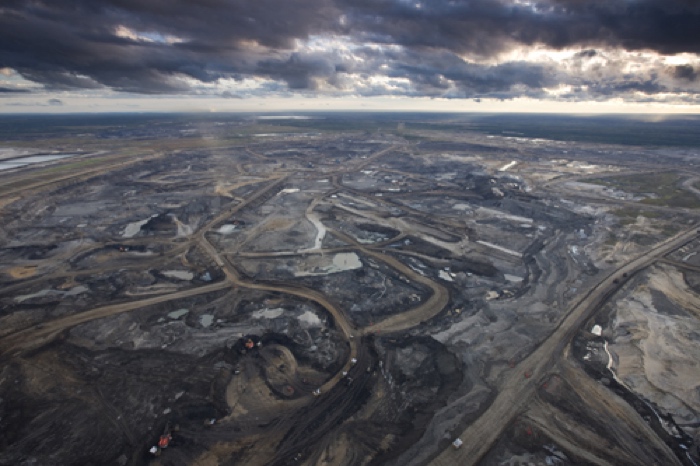
Risky Business: tar sands investment in a carbon constrained world
When oil prices crashed late last year, the high-cost and capital intensive tar sands sector took a hit. The industry had already been showing signs of weakness with underperforming stocks, project cancellations, and serious concerns about market access. But low oil prices have driven a whole new level of cost cutting and project delays.
 When oil prices crashed late last year, the high-cost and capital intensive tar sands sector took a hit. The industry had already been showing signs of weakness with underperforming stocks, project cancellations, and serious concerns about market access. But low oil prices have driven a whole new level of cost cutting and project delays.
When oil prices crashed late last year, the high-cost and capital intensive tar sands sector took a hit. The industry had already been showing signs of weakness with underperforming stocks, project cancellations, and serious concerns about market access. But low oil prices have driven a whole new level of cost cutting and project delays.
And in their wake; lost jobs, government budgets that are a mere shadow of what was expected, and some serious questions about why Canada is betting the farm on such a volatile sector.
But the risk surrounding the tar sands sector goes so much further than oil price volatility, and the writing has been on the wall for years. The Canadian tar sands represent one of the biggest pools of carbon in the world and are among the most carbon-intensive, sources of oil on the planet to produce. In other words, keeping the climate safe means we cannot afford to exploit the tar sands. This exposes the tar sands sector to climate-related risks that are increasingly problematic for Big Oil’s bottom line. These climate risks include:
Climate Advocacy: People-powered campaigns are taking on high carbon industries like the tar sands. And these campaigns are winning. Pipelines are being stopped, legal battles are being fought, and the rapid expansion of Canada’s fastest growing source of greenhouse gas pollution is no longer considered inevitable. Campaigns like these are only going to grow until political action aligns with what science says is needed to protect the climate.
-
Climate policy: trends in climate policy are clearly headed towards more ambitious territory. Yes, there are still laggards like the Canadian and Albertan governments, but if you want to see where things are headed you look to the leaders. National discussions of unburnable carbon in Europe, increasingly aggressive carbon pricing across North America, and serious pollution reduction efforts in China are all signals of the shifting trends in climate policy.
The bottom line is that as we figure out how to divvy up the remaining carbon budget, the tar sands won’t make the cut. It is the high-cost, high-carbon fuels that will get knocked off first, and the tar sands fall squarely in both categories (as recently confirmed in a study of economically optimal ways to identify unburnable carbon published in the journal Nature).
Investing in massive tar sands expansion now would be like throwing money at major investments in landlines when cell-phones were just coming onto the scene. Sure they are going to be around for a while, and will still be important for a handful of purposes, but they aren’t where the world was headed.
So lets save ourselves from locking in carbon that we don’t need and can’t afford and focus on the leading edge of energy investments that are going to define the coming decades.
*We are in Toronto tonight having this discussion with thought leaders and investment experts! Follow the discussion on Twitter: @priceofoil #climaterisk
